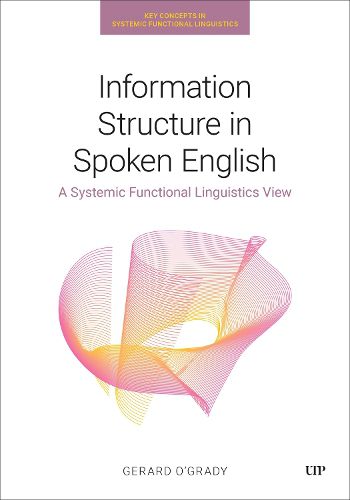Readings Newsletter
Become a Readings Member to make your shopping experience even easier.
Sign in or sign up for free!
You’re not far away from qualifying for FREE standard shipping within Australia
You’ve qualified for FREE standard shipping within Australia
The cart is loading…






In a series of publications in the 1960s culminating in the 1967 book Intonation and the Grammar of English and the three articles Notes on Transitivity and Theme, Halliday proposed a system of information structure. Tonic items were presented as New or as if they were not recoverable from the context and cotext. Post tonic items were Given or recoverable. The status of pre-tonic items was ambiguous and needed to be considered in context.
Halliday's view has proven to be reliable over the past 50 years but this book aims to revise it. The book argues that Halliday's system was premised on two views both of which have been questioned over the years. The first is that Halliday's notion of recoverability was influenced by Shannon and Weaver's mathematical theory of information predictability where information can be encoded in terms of bits which are transmitted from source A to source B. This is not how SFL theory sees language functioning. Languaging is not simply the transmitting of information but rather a social semiotic practice which interactants deploy to affiliate with others while pursuing their individual needs. Secondly the binary division of information as either New (1 bit) or Given (0 bit) has been questioned in recent years by work which has looked at presuppositions and implications. In addition to these issues the book argues that Halliday's definition blurs the important distinction between referentiality and identification. The book concludes by presenting an updated Hallidayan model which is sensitive to the above issues.
$9.00 standard shipping within Australia
FREE standard shipping within Australia for orders over $100.00
Express & International shipping calculated at checkout
In a series of publications in the 1960s culminating in the 1967 book Intonation and the Grammar of English and the three articles Notes on Transitivity and Theme, Halliday proposed a system of information structure. Tonic items were presented as New or as if they were not recoverable from the context and cotext. Post tonic items were Given or recoverable. The status of pre-tonic items was ambiguous and needed to be considered in context.
Halliday's view has proven to be reliable over the past 50 years but this book aims to revise it. The book argues that Halliday's system was premised on two views both of which have been questioned over the years. The first is that Halliday's notion of recoverability was influenced by Shannon and Weaver's mathematical theory of information predictability where information can be encoded in terms of bits which are transmitted from source A to source B. This is not how SFL theory sees language functioning. Languaging is not simply the transmitting of information but rather a social semiotic practice which interactants deploy to affiliate with others while pursuing their individual needs. Secondly the binary division of information as either New (1 bit) or Given (0 bit) has been questioned in recent years by work which has looked at presuppositions and implications. In addition to these issues the book argues that Halliday's definition blurs the important distinction between referentiality and identification. The book concludes by presenting an updated Hallidayan model which is sensitive to the above issues.